TechnologySeptember 20, 2021
Technology solutions powering the 4th Industrial Revolution
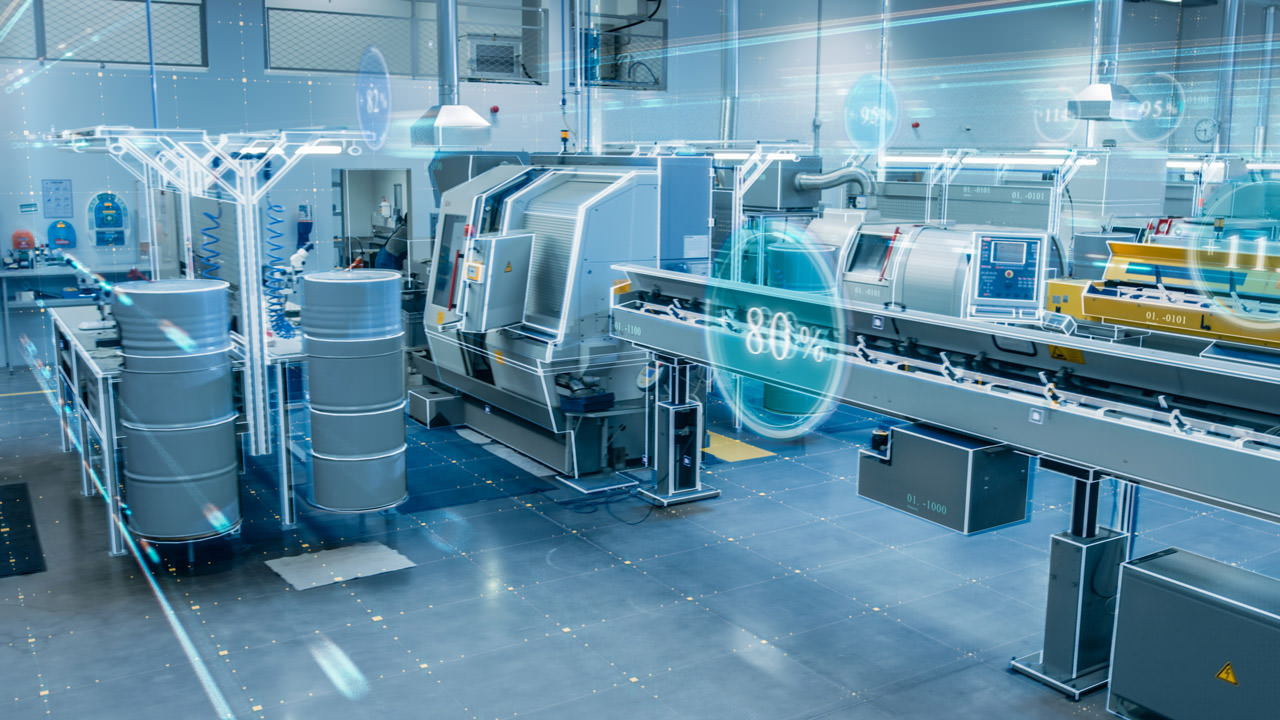
Industry 4.0 has been a decade in the making but even now the technology is progressing at a rapid pace. This Industrial Ethernet Book special report on Industry 4.0 looks at the impact of cyber physical systems, data democratization and new solutions for connecting with smart manufacturing operations.
Industry 4.0 is the future of industrial production but it also requires solutions individually tailored to each application. The megatrends emerging to drive the technology are focused on creating an ecosystem of solutions aimed at systematic production improvement.
In this special report, the Industrial Ethernet Book offers comprehensive coverage and offers the perspective of industry leaders on how Industry 4.0 technologies are shaping the future of the smart factory.
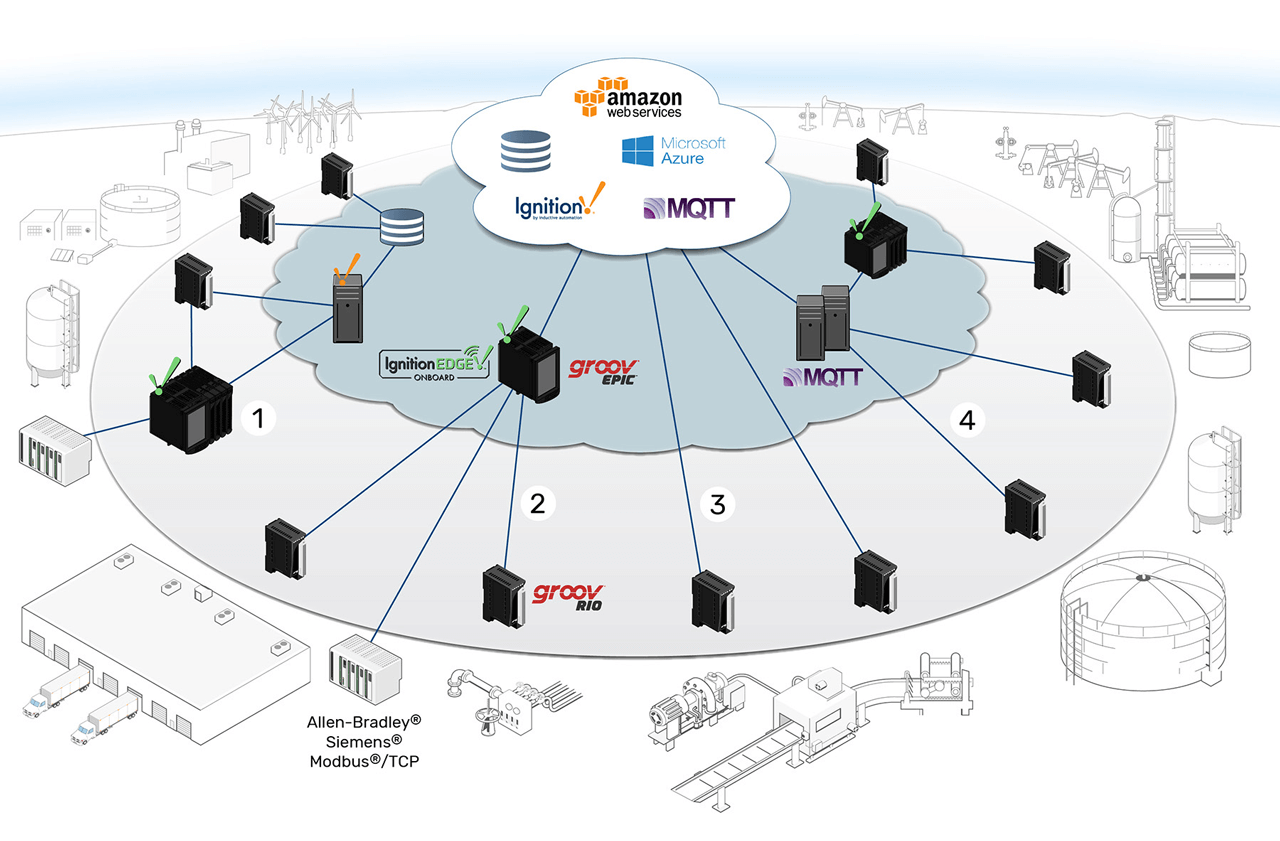
Building Industry 4.0 ready MQTT networks at scale to leverage edge and cloud computing relies on a combination of industrial-strength software solutions.
Turning data into decisions
Enabling distributed access to field data
“The Industry 4.0 focus on turning data into decisions as efficiently as possible places a much higher value on distributed access to field data,” Josh Eastburn, Director of Technical Marketing at Opto 22 told IEB recently. “This continues to drive interest in edge computing as practitioners look for more efficient ways to collect, process, transform, and deliver data to connected systems. For similar reasons, adoption of MQTT and its Sparkplug B payload format continues to increase.”
“Together, they are being applied to address long-standing obstacles to I4.0 integration, specifically in the areas of cybersecurity, data democratization, and brownfield retrofits,” he added.
Industrial edge devices
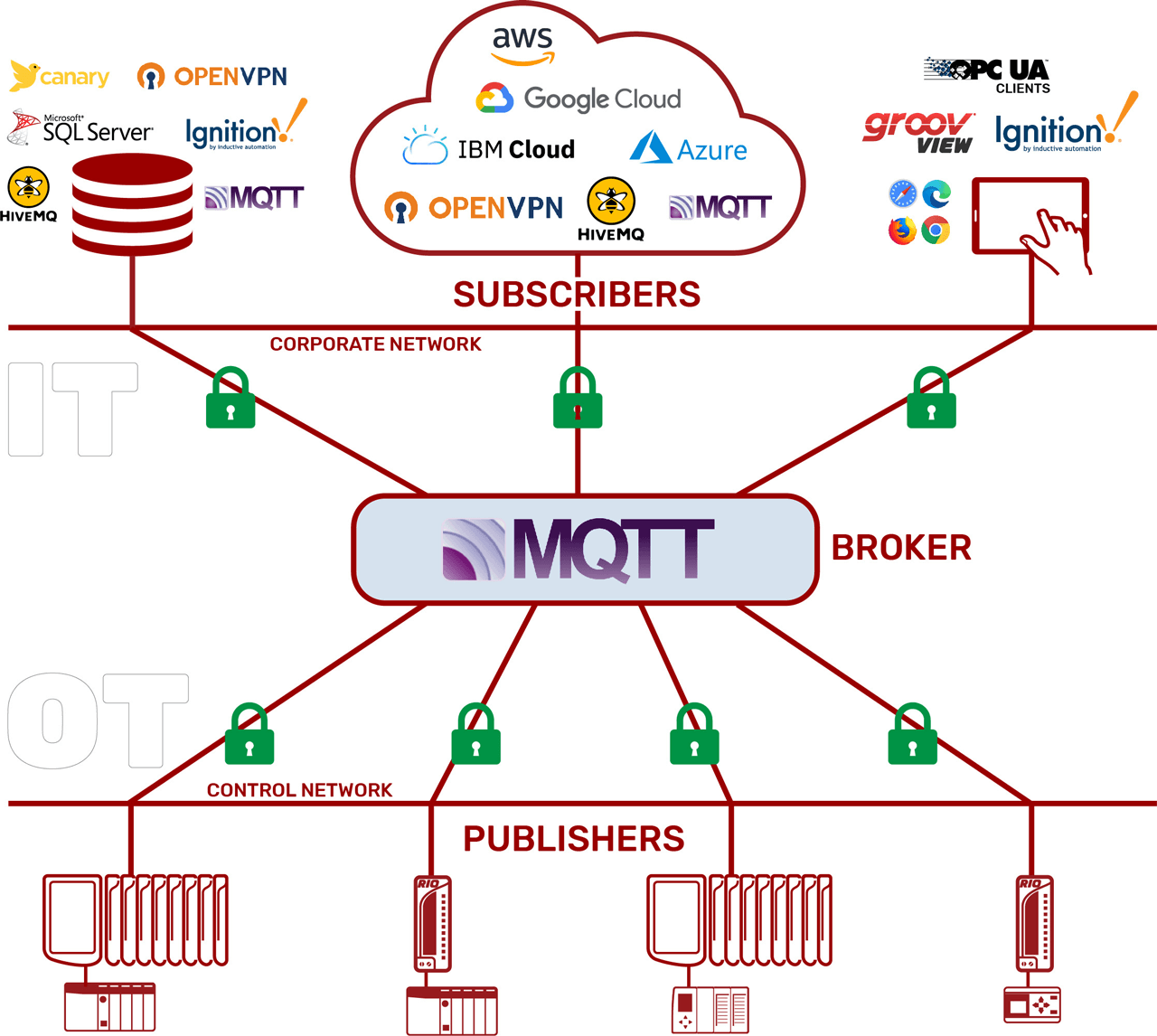
In the MQTT architecture, publishers and subscribers from across the organization connect to a common data broker.
According to Eastburn, unlike traditional field devices, industrial edge devices provide general-purpose computing, networking, and storage capabilities in addition to standard OT interfaces for data and control. Embedded security measures and communications protocols allow edge devices to bridge the gap between OT and IT. They are able to connect directly to IT networks and applications, processing and transmitting OT data without relying on external servers. They can also consolidate other automation functions for control, visualization, MES, and more.
MQTT was designed to provide secure, lightweight, responsive distributed communication and has become the most popular transport protocol for IoT applications. It uses an efficient, data-agnostic, byte array payload that works for any kind of data, and introduces a novel communication model that is well suited for I4.0 applications. Rather than cyclically polling field devices, MQTT-enabled field devices and gateways publish data independently to the MQTT broker (the central server) when they detect a change in a monitored value. This behavior is known as report-by-exception. Other MQTT clients, including software and other field devices, can register with the broker as subscribers to data of interest, which are identified by individual topic strings. The broker distributes updates from the field to topic subscribers as they arrive.
Sparkplug B is a popular standard for MQTT communication within industrial applications that was developed to provide greater interoperability and state management for mission-critical operations. It defines a data-rich payload format, a common topic format, and mandates the use of messages that alert the system when a client enters or exits the network. Any MQTT system can process Sparkplug B payloads if clients are able to publish in and interpret the payload format.
Both MQTT and Sparkplug B are open-source software managed by the OASIS and Eclipse foundations, respectively.
Technology and application benefits
“Industrial edge devices address modern cybersecurity requirements that support scalability and data democratization. While this enables innovative new applications, more importantly, it enables the digital transformation of existing manufacturing operations where the majority of valuable industrial data can be found,” Eastburn said. “In these brownfield situations, replacing legacy PLCs and other devices with newer equipment for the purposes of digitally transforming is expensive and complicated.”
He added that industrial edge devices provide a more feasible option. They can apply a layer of security, data processing, and communication above the process level without disrupting or modifying ongoing operations. This layer mediates communication directly between OT and IT networks and avoids the complexity of the Industry 3.0 technology stack (for example: PLC > HMI > SCADA > MES > ERP).
MQTT provides communication that is 80-90% more efficient than traditional poll-response protocols. Its lightweight payload, brokered publish-subscribe architecture, and report-by-exception communication pattern reduce bandwidth requirements and eliminate redundant transmissions. Since MQTT connections originate from the clients, rather than from the MQTT server, devices can block outside (incoming) connection requests completely while still providing bi-directional communication.
Sparkplug B builds on the essential scalability that MQTT provides to make it even easier to build and manage IIoT networks. With a standard payload format, clients are able to identify and handle data from across the network without knowing the publisher’s details. This also applies at scale. All publishing devices and data can be discovered automatically without inputting device addresses or tags.
Industry 3.0 deficiencies
“Industry 3.0 architectures suffer from multiple long-standing weaknesses. Low-level devices are highly vulnerable to cybersecurity risks and provide a scope of communication that is generally limited to OT network protocols,” Eastburn concluded.
“Other hardware and software systems, usually multiple layers, are required to safely transform and transport field data, meaning that while communication across the organization is possible with I3.0 technologies, it is expensive and complicated to scale up to the magnitude we need for I4.0.”
He added that, in fact, we are seeing that many I4.0 proof-of-concept projects get stuck in so-called pilot purgatory because they are built on technologies that weren’t designed for scale:
- Poll-response protocols that require many point-to-point connections, which consume bandwidth without producing new data and introduce new security vulnerabilities;
- Complicated network schema that mitigate the lack of endpoint security but also make it more difficult to connect distributed systems;
Closed data formats and applications that connect some parts of the organization but also become new data siloes; and - Persistent gaps in data collection and quality due to latency issues, connectivity obstacles, lack of interoperability, and the cost of expanding the system.
Cyber physical systems
Model physical plant and network layouts
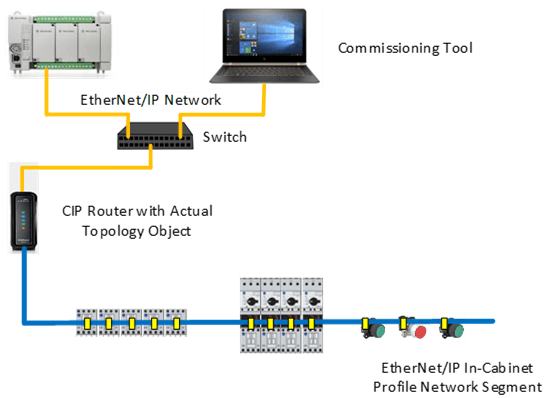
EtherNet/IP In-Cabinet Profile Network Segment With Actual Topology Object in Router.
“Cyber physical systems are one of the most promising concepts of Industry 4.0 due to their potential to transform the way that commissioning, operations, and maintenance is done within automation,” Dr. Al Beydoun, President and Executive Director of ODVA told the Industrial Ethernet Book recently.
“Cyber physical systems can model physical plant and network layouts to allow for low-cost virtual tryouts that can help pinpoint the path to optimum results without having to take the time, effort, and risk of physically implementing changes. This can help to reduce costly trial and error maintenance and engineering approaches that sometimes takes place when troubleshooting a system or installing a system modification on a deadline,” Beydoun added.
Well-designed and developed processes to initially commission a plant’s automation system might be forgotten in the chaos and pressure of an operating facility, and cyber physical systems can allow controls engineers to quickly test out potential fixes or modifications prior to physical implementation, help to avoid unplanned downtime via prognostics, and reduce repair time via augmented reality maintenance instructions.
Cyber physical systems can be enabled at the most basic level by combining CAD models, augmented reality, and diagnostics. Device and instrument inventories in massive factories and plants are one specific application where there could be tremendous value in having a cyber physical system to help facilitate the process.
Technology benefits
According to Beydoun, cyber physical systems include the use of augmented reality that can overlay virtual dimensional models on top of physical reality and also provide visualization of product status and information.
“Augmented reality can be enabled through the use of CAD models that are accessed when a QR code or WiFi signal activates the virtual reality overlay on either a phone or special augmented reality glasses,” he said. “Technology enabling augmented reality, such as LiDAR scanners that use 3D sensing to measure the distance to surrounding objects up to five meters away, is being implemented broadly in smart phones and will soon become common place. Network access is also required for diagnostics and can be enabled either directly through a device web server or a network gateway.”
Augmented reality can offer tremendous value during the entire lifecycle of a plant: during the commissioning process by enabling physical fit to be tested and confirmed, during normal operations by allowing system performance to be checked via diagnostic and prognostic indication, and for maintenance by providing step by step virtual instructions to change out a failing component. Automation professionals can thus be freed up from having to provide onerous documentation or direct operations and maintenance support.
Impact on manufacturing
Beydoun said that a virtual production model could enable new production line layouts to be tested to uncover potential bottlenecks before they happen. Potential improvements in OEE could also be vetted out in a virtual environment to result in the best outcomes actually being implemented on the plant floor.
Additionally, virtual reality that is tied into both the plant system configuration and the manufacturer support documentation could reduce training requirements for new maintenance workers.
The EtherNet/IP Standard Network Diagnostic Assembly creates a known object address inside a device to make a consistent set of diagnostic information with context quickly accessible. This makes an EtherNet/IP network effective for making key device diagnostic and network health easily available for cyber physical systems regardless of instrument type or manufacturer. The use of a common location for critical diagnostic data saves valuable engineering time and effort, which increases the odds that this critical information will make it into the decision makers’ hands when they need it.
EtherNet/IP also bolsters the value of cyber physical systems by enabling the connection of low-level in-cabinet devices to the network, such as contactors and push buttons. This additional resource constrained device connectivity is made possible via Single Pair Ethernet (IEEE Std 802.3cg-2019 10BASE-T1S).
Low-level device network connectivity via EtherNet/IP results in time savings in installation, easier troubleshooting, and increased diagnostic information.
The steady decline in the cost and size of semiconductor chips combined with the availability of Single Pair Ethernet has enabled an EtherNet/IP in cabinet bus solution that uses a multi-drop network and control power cable that spans a single cabinet with one interface per device and one switch port across multiple devices.
Automation challenges
“Automation engineers face a daunting challenge of documenting system configurations, product technical manuals, and firmware versions in an ever changing, high pressure production environment,” Beydoun said. “Diagnosing production issues can also quickly sidetrack an entire work day worth of productivity given the importance of keeping the process or line running. Virtual production models that tie into actual product status, performance, layout, and revision status as well as manufacturer support information such as technical manuals and product catalogs for easy reordering could provide a tremendous amount of value. Automation engineers could then be able to better focus on preparing for upgrades or enhancing the existing system while the cyber models would help to support operations and maintenance personnel.”
Data democratization
Leverage analytics to optimize performance
“Industry 4.0 and data science innovations have already played a large role in expanding analytic capabilities well beyond their historical limits,” Allison Buenemann, Industry Principal – Chemicals at Seeq told IEB.
“But while many processes have been improved and some terminology has changed, the methodology behind approaching process optimization problems remains constant—typically still following the framework of “define, measure, analyze, improve, control” as developed by Six Sigma more than a century ago. The problem? This approach often leads to organizational and data silos that impede rapid innovation. But as Industry 4.0 progresses, we’re seeing these data silos break down, thanks to new technologies enabling the democratization of data across organizations,” she added.
According to Buenemann, this data democratization trend, driven by self-service advanced analytics applications, is helping to create an army of front-line data practitioners, each using advanced statistical concepts to solve problems, with no PhD in statistics required. Giving process engineers and other subject matter experts (SMEs) with domain knowledge direct access to process and contextual data greatly reduces the data preprocessing efforts required to do advanced machine learning.
An extensible application interface can instantly scale the efforts of a single data scientist to many front-line operations employees, resulting in improved production outcomes.
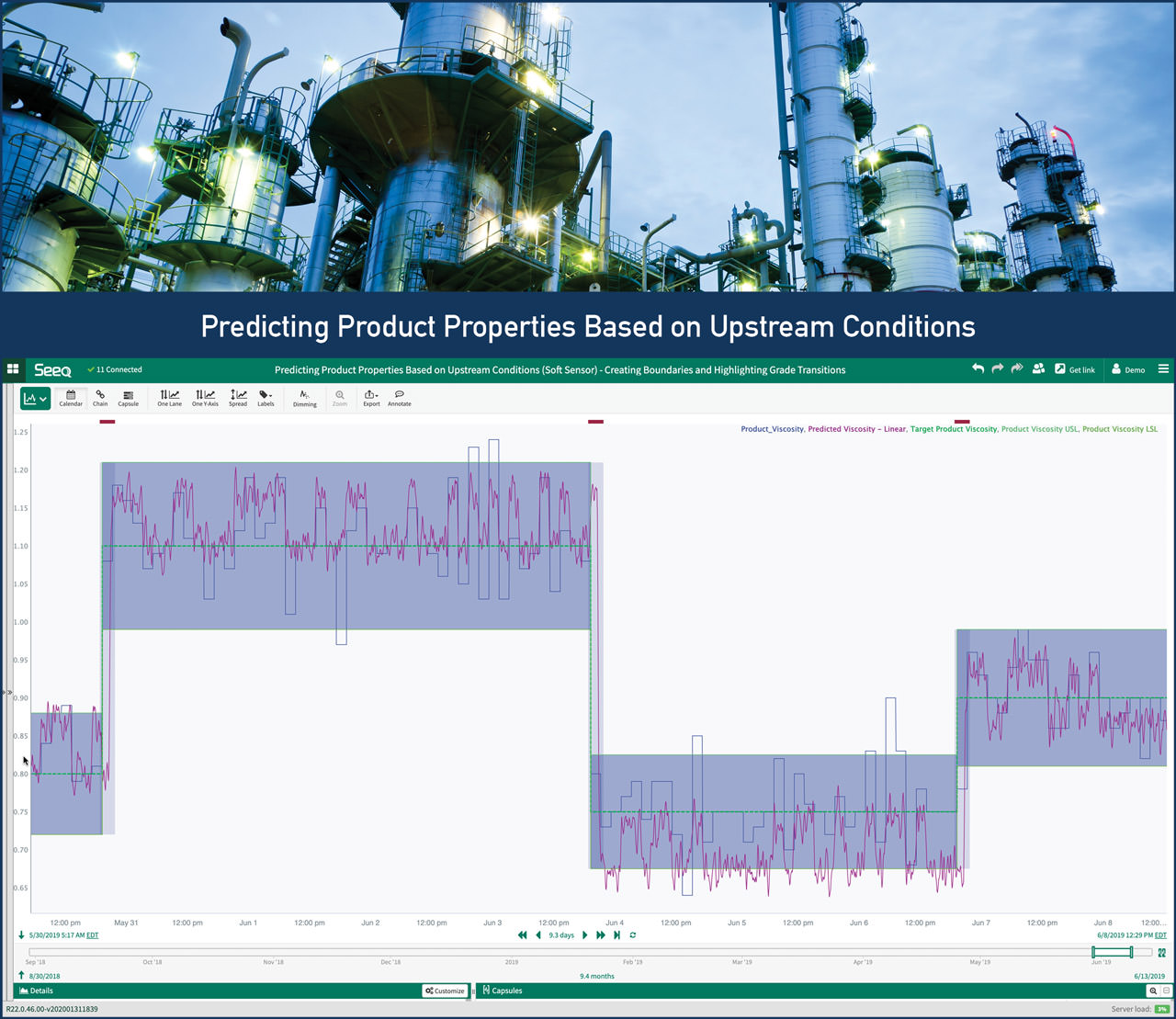
A chemical company used Seeq solutions to reduce margin losses by more than US$1 million annually.
Importance of analytics
To understand what’s unique about technologies that enable data democratization, Buenemann said let’s look at the example of applying machine learning in process manufacturing. When thinking about deployment, many assume a “divide and conquer” approach is required, with data scientists handling complex algorithms to deliver models, and SMEs then using these models and making changes based on operating conditions.
While seemingly ideal, this approach is flawed because of the gap between the initial model and the domain expertise of the SME. Excluding the SME from model development introduces additional iteration into the model building process, increasing time-to-value. And if SMEs are not confident in the action suggested by the ML outcome, they’re not likely to take action.
Although there was a time when statistical modelling methods were considered new and complex, requiring the expertise of a data scientist, today’s SMEs do not avoid statistical models. Instead, they use these and other modelling approaches daily, while also leveraging model-building experts as needed to build confidence in their workflows and recommendations.
The trend of data democratization puts the data and algorithms directly at the fingertips of SMEs who have the required domain knowledge. They can then use that data throughout the iterative improvement and control phases of operational excellence projects. Using collaborative tools, like Seeq, SMEs can their share results and document findings with colleagues (including data scientists), ensuring more expert touchpoints, while lowering the likelihood that something will be missed.
Focus on continuous improvement
“The megatrend of data democratization in Industry 4.0 has many benefits, but the largest is continuous improvement to significantly improve productivity and profitability,” she added.
“Take refining and chemical operations, for example, which are dynamic and require constant adjustment based on changes in product demand, feed slate, catalyst deactivation, and asset/equipment availability and condition. This means SMEs must use an advanced analytics application, like Seeq, that breaks down data silos and provides direct access to near-real time data. This empowers SMEs to easily refine and update models as equipment and feed changes occur, and as new products are introduced,” Buenemann said.
In fact, using a model for near-real time quality control rather than traditional feedback methods, a chemical company used Seeq to reduce margin losses due to low quality, saving more than US$1 million annually. In this instance, the deployed solution was a predictive model that accurately forecasted final product quality based on conditions in an upstream portion of the process.
Applied analytical methods must keep pace with constant variations in operating conditions. Data democratization allows front-line SMEs to keep pace with changing conditions and enables them to explore processes with colleagues, including data scientists, to create continuous improvement opportunities that drive improved outcomes.
Facing the challenges
Buenemann said that advancements in technologies providing democratization of data across organizations directly address the historical challenge of data silos, created when the connection between SMEs and data is disrupted.
“When the era of big data emerged and complexity surrounding data storage, security and access increased, the extent to which SMEs could operate at the speed of thought was greatly reduced or eliminated,” she said. “They needed others to constantly resupply data, and they then spent hours wrangling it using spreadsheets, creating bottlenecks for companies looking to leverage data analytics.”
“Today, we know that having data—whether process data, quality metrics, shift logs, environmental data, or any other time series data—directly accessible to SMEs from a single application is a crucial requirement for a successful manufacturing operation. Advanced analytics applications, like Seeq, empower SMEs to directly interact with data and perform calculations using their domain knowledge.”
Connecting automation & IoT
Effective technology and software ecosystems
One key trend is that third-party providers are working together to offer Industry 4.0 solutions via more effective automation platform ecosystems. The goals are:
- Control multi-functionality thanks to apps
- Co-creation and new business potential
- New partnerships in the area of IoT solutions for automation
In modern automation, machine control, IT and the Internet of Things are being connected seamlessly. Using its ctrlX AUTOMATION platform, Bosch Rexroth is working to connect these worlds. Using a partner network, it offers its own IoT solutions as well as applications from third-party providers as apps.
Thanks to these apps, the functions of the ctrlX CORE control functions can be configured as necessary, not only as a machine control system, but also as a secure and intelligent gateway solution. With its open design and numerous interfaces, the control system is also suitable for brownfield installations in order to add IoT connectivity and functions to existing machines and systems.
Using the ctrlX IOT software, the automation platform already has important basic apps such as a firewall, a VPN client and an OPC UA server and client. These are complemented by partner IoT solutions. As a result, users are offered a wide range of apps and enjoy a great deal of flexibility.
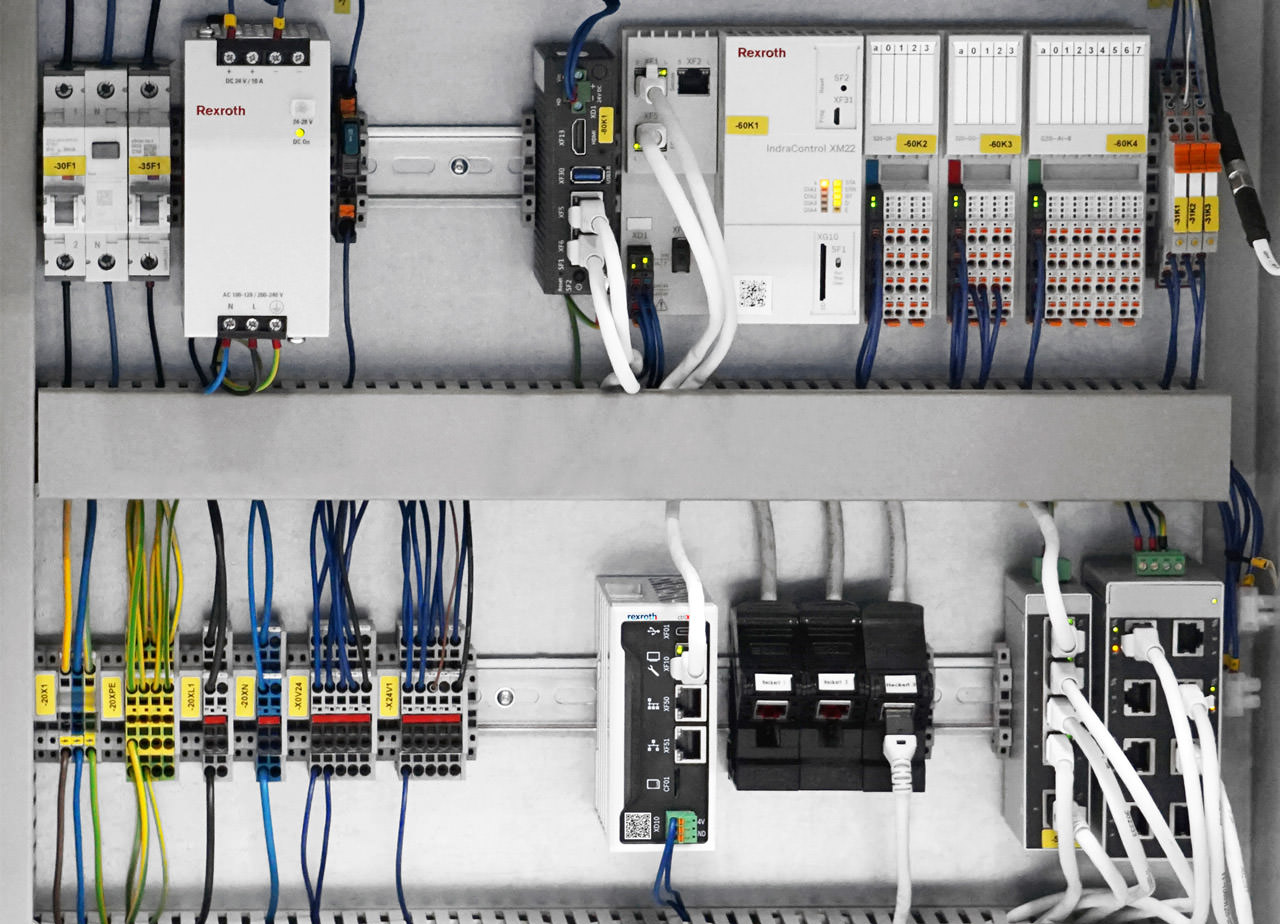
The ctrlX CORE control platform can be easily integrated into existing machines to retrofit IoT connectivity and functions.
IoT application tools
For quick IoT application development, Prescient Devices, Inc. (PDI) is part of the ctrlX ecosystem. With the Node-RED-based Prescient Designer, the company offers a SaaS solution in order to design, simulate, distribute, operate and expand IoT/AI systems. This makes it possible to program thousands of IoT devices such as ctrlX CORE centrally in the cloud at one location and to transfer the program code to the devices with a click. As a result, these can be commissioned and maintained efficiently.
Andy Wang, founder & CEO of Prescient Devices, Inc. says: “Together with Bosch Rexroth, we’d like to simplify and speed up the development of IoT applications without having to use complex technology. The Prescient Designer is tailored to the community and platform. This allows an engineer to design and create an edge-to-cloud IoT solution for example within a few weeks. Compared to conventional IoT development, this leads to 12x quicker development, 6x lower costs and greater real-time management and analysis intelligence at all times.”
IXON B.V. is another ctrlX World partner. IXON offers an end-to-end IIoT solution for all remote maintenance requirements from the hardware to the cloud. Bart van den Corput, Key Account Manager at IXON, explained: “Our aim is to encourage and support the IIoT transition among machine manufacturers by providing a secure cloud environment with all the technology needed to make the IIoT directly accessible anywhere in the world.”
IXON is cooperating in order to offer machine manufacturers even greater flexibility when creating an IIoT solution, which meets their requirements. As a result, they can easily integrate the IIoT into their automation solutions. Users can download the IXagent app from the App zone.
This creates an ability to access to all IXON cloud platform functionalities, including solutions for remote access, cloud data logging, alarms and messages.
Solutions from HiveMQ GmbH are also available, offering an MQTT broker for the ctrlX CORE control system. This allows data to be exchanged between various hardware and software platforms. MQTT is an industry standard which is now very popular for IoT use cases such as intelligent production. At the same time, it is the basis for use cases such as connected vehicles, logistics, Industry 4.0 and connected IoT products.
Hans Michael Krause, Head of ctrlX World Product Management at Bosch Rexroth, said that “with all these IoT solutions which are available through the ctrlX World, users can easily connect the necessary automation processes as they would with a smartphone. Simply download and launch the app.”
“Bosch Rexroth also provides numerous sector-specific applications of its own,” he added. “If the user would like to bring in their own personal knowledge, they can create apps themselves in all popular programming languages using the automation platform.
State of Industry 4.0
Global survey results report progress
Molex has announced the results of a global survey of Industry 4.0 manufacturing stakeholders driving advancements in robotics, complex machines and device or control systems. The findings reflect steady progress in the development of Industry 4.0 initiatives across the industrial automation ecosystem, including smart automation, connectivity and analytics that add efficiency and intelligence throughout the manufacturing lifecycle.
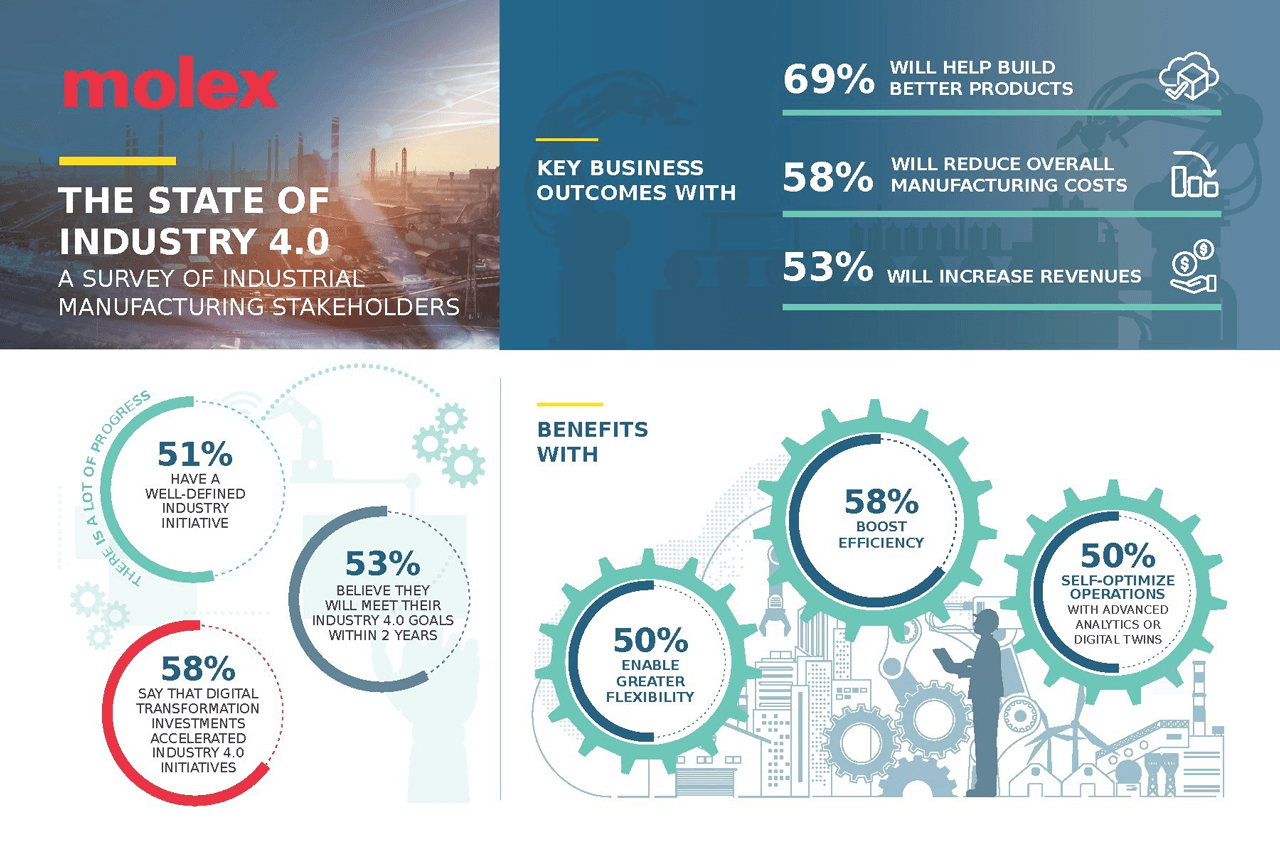
The findings reflect steady progress in the development of Industry 4.0 initiatives across the industrial automation ecosystem.
Key findings
The Molex survey illustrates evidential data of progress made, key business outcomes and benefits of Industry 4.0.
- 51% report having a well-defined Industry 4.0 corporate priority with executive sponsorship; 49% have already achieved success while 21% are still in the investment stage.
- More than half of the respondents expect to meet their Industry 4.0 goals within two years, while a third believe that milestone will take three-to-five years.
- 58% say that digital transformation investments have accelerated Industry 4.0 efforts.
- 44% find organizational and cultural adoption barriers hardest to overcome.
- Operational efficiency, manufacturing flexibility and advanced analytics are poised to propel customer benefits.
- Major implementation barriers span from cultural, business model and technology challenges.
“It’s gratifying to see widespread Industry 4.0 progress, as the Fourth Industrial Revolution is pivotal to fulfilling the promises of digital manufacturing,” said John Newkirk, VP and general manager, Industrial Solutions, Molex.
“Ensuring success requires a pragmatic approach, organizational alignment and secure connectivity solutions that drive operational efficiency while boosting manufacturing flexibility and reducing costs,” he added.
Molex commissioned third-party research firm, Dimensional Research, to conduct The State of Industry 4.0 Survey in June 2021, polling 216 qualified participants in a variety of roles, such as R&D, engineering, production manufacturing, strategy, innovation, and supply chain management. The primary research goal was to capture data on practical real-life Industry 4.0 experiences and opinions. Overall, the survey respondents validated continued growth, potential customer benefits and expected business outcomes emerging from the Industrial Internet of Things (IIoT) and smart manufacturing.
Outcomes and benefits
According to the survey, the most impactful business outcomes encompass the ability to build better products (69%), reduce overall manufacturing costs (58%), increase revenues (53%), offer products at lower prices (35%) and decrease time-to-market of new solutions (35%). For machine builders, robot manufacturers and systems integrators, the opportunity to expand factory-floor automation and intelligence is expected to drive significant customer gains.
Among the most anticipated customer benefits are increased efficiency of robots, machines, and other manufacturing assets (58%); greater flexibility on manufacturing lines (50%); the use of advanced analytics or Digital Twins to self-optimize operations (50%); virtual design and simulation of new production facilities before making capital expenditures (42%); elevated labor productivity (41%); and unlocked access to real-time data across facilities (26%).
Overall, a significant majority of survey respondents (87%) are excited about the transformative power of Industry 4.0 over the next decade.


